Table of Contents
- Introduction
- Oropharyngeal Airways (OPA)
- Nasopharyngeal Airway (NPA)
- Comparative Analysis Between OPAs and NPAs
- Use OPA And NPA For Patient Safety
Healthcare providers save lives every day with Oropharyngeal Airways and Nasopharyngeal Airways. These tools create breathing passages when patients cannot maintain their own airway. Oropharyngeal Airways prevent the tongue from blocking the throat, while Nasopharyngeal Airways establish breathing channels through the nose to the pharynx.
Your skill with these devices directly impacts patient outcomes in emergency situations. All medical professionals must master these techniques regardless of specialty. As a practitioner, you must learn when and how to use these devices, proper sizing techniques, and methods to avoid common complications. Scroll down to understand OPA and NPA’s immediate clinical applications across all healthcare environments.
What Are Oropharyngeal Airways?
An oropharyngeal airway (OPA) is a curved plastic device that helps keep an unconscious person’s airway open by stopping the tongue from blocking the throat. When someone loses consciousness, their tongue can relax and fall backward, making it hard to breathe. An OPA prevents this by creating a path for air to flow from the mouth to the lungs. Let us look at various aspects of OPA’s uses and how to measure for oral airway:
When Should You Use an Oropharyngeal Airway?
OPAs provide airway support for when a person is completely unconscious and unable to maintain their airway on their own. This often happens in cases of drug overdose, seizures, or deep unconsciousness caused by a traumatic brain injury. Inserting an OPA keeps the airway open and allows air to pass freely.
In medical settings, OPAs are frequently used during general anesthesia to keep the airway clear before inserting a breathing tube. They also play an integral role in cardiac arrest situations, where maintaining an open airway is important for delivering oxygen through a bag-mask device. Without an OPA, the tongue can obstruct airflow, making ventilation less effective.
Who Should NOT Receive an OPA?
While an Oropharyngeal Airway (OPA) is useful, it is not safe for every patient. Here are key cases where an OPA should be avoided:
Patients Who Are Conscious or Semi-Conscious
If someone is awake or slightly responsive, inserting an OPA can trigger the gag reflex. This may cause gagging, vomiting, or aspiration pneumonia (a serious condition where vomit enters the lungs and causes an infection). If a patient can respond to commands or shows signs of resistance, an OPA should not be used.
Patients with Oral Trauma or Injuries
If a patient has facial fractures, mouth injuries, or recent oral surgery, an OPA can make things worse. It may displace broken bones, increase bleeding, or reopen surgical wounds. In cases where there’s a tumor, abscess, or foreign object in the mouth, inserting an OPA might worsen the blockage instead of clearing the airway.
Patients with Trismus (Lockjaw)
Another situation where an OPA should not be used is when a person has a trismus, also known as lockjaw. This condition causes the jaw muscles to tighten so much that the mouth cannot open, making it impossible to insert the device without causing damage. Trismus can result from infections like tetanus or from seizures, making airway management more challenging.
Patients with Temporomandibular Joint (TMJ) Disorders
Patients with TMJ disorders already experience jaw pain and limited movement. Forcing their mouth open to insert an OPA can worsen their condition and cause severe discomfort.
Before inserting an OPA, always assess whether the benefits outweigh the risks. If the patient isn’t a good candidate, consider alternative airway management options to keep them safe.
How Do You Choose the Right OPA Size?
Correct OPA sizing is important for effective airway maintenance. The answer to how to measure oropharyngeal airway size is straightforward: place the device alongside the patient’s face. It should extend from the corner of the mouth to the angle of the jaw. This ensures it will fit properly when inserted.
Selecting the correct OPA size helps in keeping the airway open without causing complications. If the device is too large, it can push the epiglottis (a small flap that covers the windpipe) down. This could worsen the obstruction instead of clearing it. On the other hand, an OPA that’s too small won’t hold the tongue in place, allowing it to fall back and block airflow.
OPAs come in various sizes, typically ranging from 40 mm to 110 mm. Understanding proper sizing is essential before learning how to insert the device. Choosing the right size is a small step that makes a big difference in effective airway management.
It is important to understand OPA sizing before learning how to measure the oral airway. OPAs come in various sizes, ranging from 40 mm to 110 mm. Moreover, choosing the right size is a small step that makes a big difference in effective airway management.
What’s the Best Way to Insert an OPA?
For adults, the best technique is first to open the mouth using the cross-finger method (placing one finger on the upper teeth and another on the lower teeth to pry them apart gently). Then, insert the OPA upside-down with the curve facing up. Once it reaches the soft palate, rotate it 180 degrees so it curves over the tongue and sits in the proper position.
For children, the approach is different to prevent injury. Instead of rotating the device, insert it right-side up while using a tongue depressor to hold the tongue down gently. This avoids unnecessary trauma to the soft tissues in the mouth.
After placement, check that the flange (the flat end of the OPA) rests against the patient’s lips, while the other end sits deep in the throat (hypopharynx) without blocking airflow
What Can Go Wrong with an OPA?
While OPAs are simple in design, improper use can lead to serious complications. The most common issue is stimulation of the gag reflex, which can cause vomiting and lead to aspiration. This can result in:
- Chemical pneumonitis: lung inflammation from stomach acid
- Bacterial pneumonia: a lung infection
- Acute respiratory distress syndrome (ARDS): a severe condition where the lungs struggle to provide oxygen to the body.
Trauma during insertion or prolonged use can also cause problems. Patients may suffer from dental damage, cuts on the lips or gums, tongue injuries, or abrasions on the roof of the mouth. Using an OPA that is too large or incorrectly positioned can push the tongue backward instead of keeping the airway open. This airway malposition can go unnoticed until the patient’s oxygen levels drop, making early recognition and proper sizing necessary.
What Are Nasopharyngeal Airways?
Nasopharyngeal airways (NPAs), sometimes called nasal trumpets, are flexible, tube-shaped devices inserted through the nose into the posterior pharynx. These soft rubber or plastic conduits create an air passage from the nares to the pharynx, bypassing potential upper airway obstructions. NPAs maintain airway patency while better tolerating partial consciousness compared to their oral counterparts (OPAs).
When Is an NPA the Right Choice?
An NPA (Nasopharyngeal Airway) is a good choice for patients who are semi-conscious or still have a gag reflex. It’s helpful when an OPA (Oropharyngeal Airway) can’t be used, especially in patients who are partially awake, recovering from seizures, under the influence of drugs or alcohol, or lightly sedated.
NPAs are also useful when oral access is limited, such as in cases of lockjaw, dental injuries, or recent oral surgery. In patients with facial trauma or difficulty breathing through the mouth, NPA provides a clear airway without causing discomfort. Since patients can still speak with an NPA, it’s easier to monitor changes in their mental status.
Who Should NOT Receive an NPA?
The most serious contraindication for NPA involves suspected or confirmed basilar skull fractures. In these injuries, the barrier between the nasal cavity and brain may be compromised. This creates a risk of the NPA entering the cranial cavity during insertion.
Severe facial trauma, like midface fractures like Le Fort fractures, also contraindicate NPA use. The disrupted anatomy increases the risk of creating false passages, worsening existing injuries, or causing uncontrolled bleeding. Patients with known nasal obstructions such as polyps, severe deviated septum, or recent nasal surgery should avoid NPA placement to prevent tissue damage.
Coagulopathies and anticoagulant therapy present relative contraindications due to the increased bleeding risk from the highly vascular nasal mucosa. Patients with nasal foreign bodies, active epistaxis, or known nasal tumors should not receive NPAs as the insertion may worsen their condition.
How Do You Choose the Right NPA Size?
Proper NPA sizing varies based on patient size and anatomy. For adults, NPAs range from 6 to 9 cm in length. Adults with small builds need 6-7 cm NPAs, medium builds require 7-8 cm devices, and large builds need 8-9 cm NPAs. Several reference methods help healthcare providers select the right size for nasopharyngeal airway measurement.
The ear lobe or tragus technique for NPA measurement positions the nasal trumpet with its beveled tip pointing toward the ear lobe and the opposite end at the nasal tip. The correct size will just reach the earlobe. Alternatively, the mandible technique places the NPA at the nasal opening and orients it toward the mandibular angle.
For pediatric patients, NPA sizing is more complex. The NPA size corresponds with the endotracheal tube size or is 0.5 mm larger. Research from the National Center for Biotechnology Information shows that patient height predicts proper NPA measurement better than the traditional technique.
What’s the Correct Way to Insert an NPA?
Proper insertion begins with thorough lubrication using a water-soluble lubricant. The provider examines both nostrils and selects the more patent one. With the beveled tip facing the septum to avoid turbinate trauma, the provider inserts the nasal trumpet along the floor of the nasal cavity in a neutral head position. Gentle, steady pressure guides it through the natural curve of the nasopharynx.
What Risks Come with NPA Use?
Despite their relative safety, NPAs can cause several complications when improperly sized or placed. Epistaxis (nosebleed) represents the most common adverse effect due to trauma to the vascular nasal mucosa during insertion. Though usually self-limiting, these bleeds can become a cause of concern in patients with coagulation disorders or on blood thinners.
Nasal tissue damage, including abrasions, lacerations, or avulsion of nasal turbinates, may occur with forceful insertion or inappropriate nasal trumpet sizing. Prolonged NPA use can lead to pressure necrosis of the nasal tissues, nasal vestibulitis, or sinusitis. The device may stimulate the trigeminal nerve, triggering bradycardia through the nasopulmonary reflex in some patients.
Misplacement creates more serious risks. An NPA inserted with excessive force or improper angle might create false passages through soft tissues. It may also enter the cranial cavity in patients with unrecognized skull base fractures. If positioned too deep, the nasopharyngeal airway can stimulate laryngospasm or push the epiglottis against the laryngeal inlet, worsening obstruction.
Read More: CPR With an Advanced Airway | Continuous Compression With Bag Mask
Comparative Analysis Between OPAs and NPAs
Oropharyngeal and nasopharyngeal airways are devices that maintain open breathing passages in unconscious patients. These tools help healthcare providers secure airways when patients cannot maintain them on their own.
Advantages of each airway type
Oropharyngeal airways offer quick insertion in emergency situations. They work well for patients who need short-term airway management during procedures. These devices cost less than more complex options and require minimal training to use correctly. Medical teams can insert them without specialized equipment, making them valuable in resource-limited settings. They also allow for easy suctioning of the airway when needed.
Nasopharyngeal airways cause less gagging in semi-conscious patients. They fit well in patients with limited mouth opening or oral injuries. These devices can remain in place longer than oral airways, which makes them useful for extended care situations. Patients often tolerate them better while regaining consciousness. They also work around dental issues that might complicate oral airway placement. Below is the table summarizing the different features of OPA and NPA
| Feature | Oropharyngeal Airway (OPA) | Nasopharyngeal Airway (NPA) |
| Best for | Completely unconscious patients | Semi-conscious patients with gag reflex |
| Insertion | Through the mouth, over the tongue | Through the nose into the pharynx |
| Contraindications | Gag reflex, oral trauma, trismus | Skull fractures, severe nasal trauma |
| Tolerance | Poor in conscious patients | Better tolerated in semi-conscious patients |
| Complications | Gagging, aspiration, airway trauma | Epistaxis, nasal tissue damage, misplacement |
Use OPA And NPA For Patient Safety
Oropharyngeal Airways and Nasopharyngeal Airways represent important skills in your clinical toolkit. These devices provide immediate airway support. Use an OPA (Oropharyngeal Airway) for unconscious patients without a gag reflex, and an NPA (Nasopharyngeal Airway) for semi-conscious patients or those with an intact gag reflex. Choosing the right airway depends on the patient’s level of consciousness and comfort. A properly sized airway, inserted with the right technique, provides immediate benefits with minimal risk.
Do not forget that these airways offer temporary solutions that require ongoing monitoring and reassessment. Regular patient checks determine whether to remove the device or switch to definitive airway management. You can enroll in CPR courses that teach airway management and master these tools for advanced airway skills.







